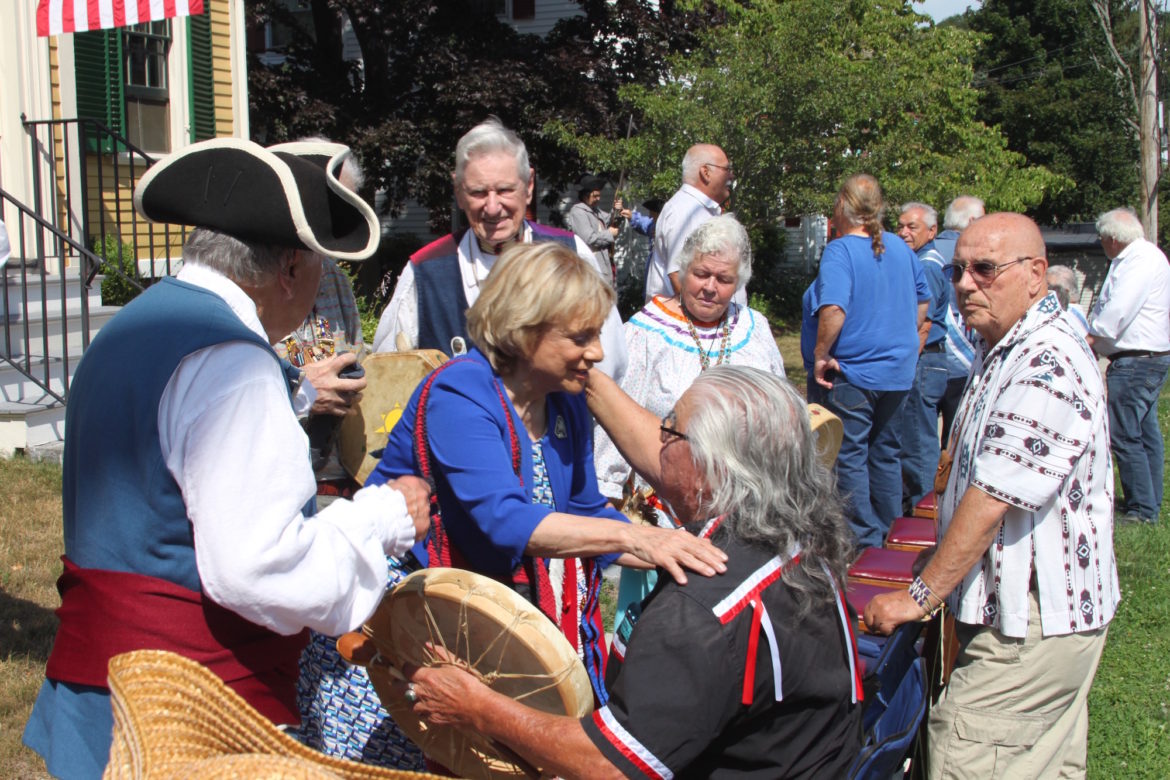
Charlie Breitrose
Governor’s Councilor Marilyn Petitto Devaney, of Watertown, greets Roland Jerome, chief of the United Native American Cultural Center in Devens, during the celebration of the signing of the Watertown Treaty – the first treaty signed by the U.S. and united the Americans with Indian tribes in what is now Maine and Canada.
Descendants of the original signers of the Treaty of Watertown came to celebrate the 240th anniversary of the signing of the first treaty made with a foreign power by the United States.
Members of the Mi’kmaq and the Maliseet (then known as the St. John’s) Indians signed a treaty with the U.S. on July 19, 1776, agreeing to support the new nation in its fight against the British. The signing occurred at the Edmund Fowle House. The house now sits on Marshal Street, just a short distance from where it sat at the time, on Mt. Auburn Street.
Saturday, the Historical Society of Watertown celebrated the signing of the treaty, and another major historical event – the first reading of the Declaration of Independence in Massachusetts, which took place July 16, 1776.
Just as then, the Declaration was read in its entirety from the window of the Council Chamber on the second floor of the house during Saturday’s ceremony. This time by Historical Society member Bob Childs, who dressed in Colonial attire. Next, the Treaty of Watertown was read on the front steps of the house.
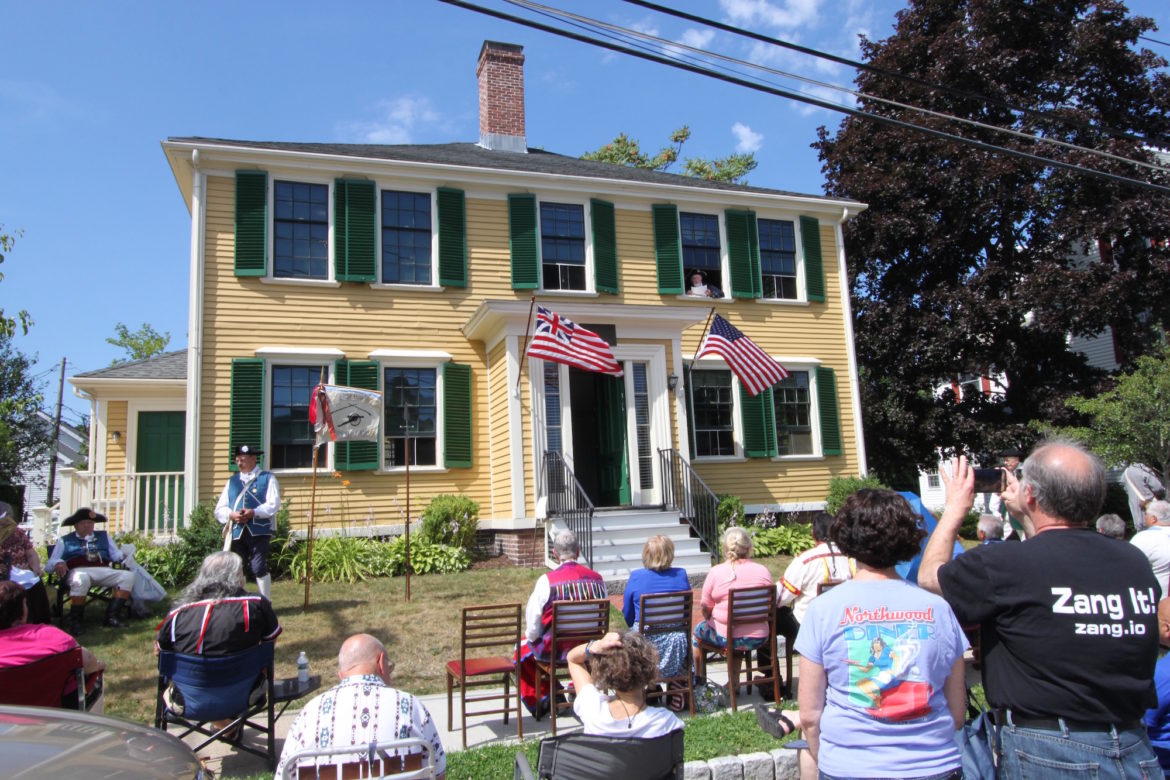
Charlie Breitrose
Bob Childs of the Historical Society of Watertown reads the Declaration of Independence from the same spot it was first read in 1776, the second floor of the Edmund Fowle House.
Ron Knockwood, Sipken’kati Ditrict Mi’kmaq Grand Council Mi’kmaq tribe, attended the event for the second straight year. He traveled down from Nova Scotia, Canada, with his family and others from the tribe.
“Looking out I see direct descendants of the people who signed the treaty,” Knockwood said.
He said for the Mi’kmaq, the treaty represented peace and friendship with the United States more than as a military agreement.
For years, Roland Jerome, who is chief of the United Native American Cultural Center in Devens, represented the Mi’kmaqs in the ceremonies. This year he took part with others from the UNACC by playing drums and singing tradition songs.
Henry Bear, a member of the Maliseet tribe and represents the tribe in the Maine House of Representatives, traveled down to be part of the ceremony. His ancestor, Ambrose Bear (mistakenly recorded in historical documents as Var), was one of the signers for the tribe.
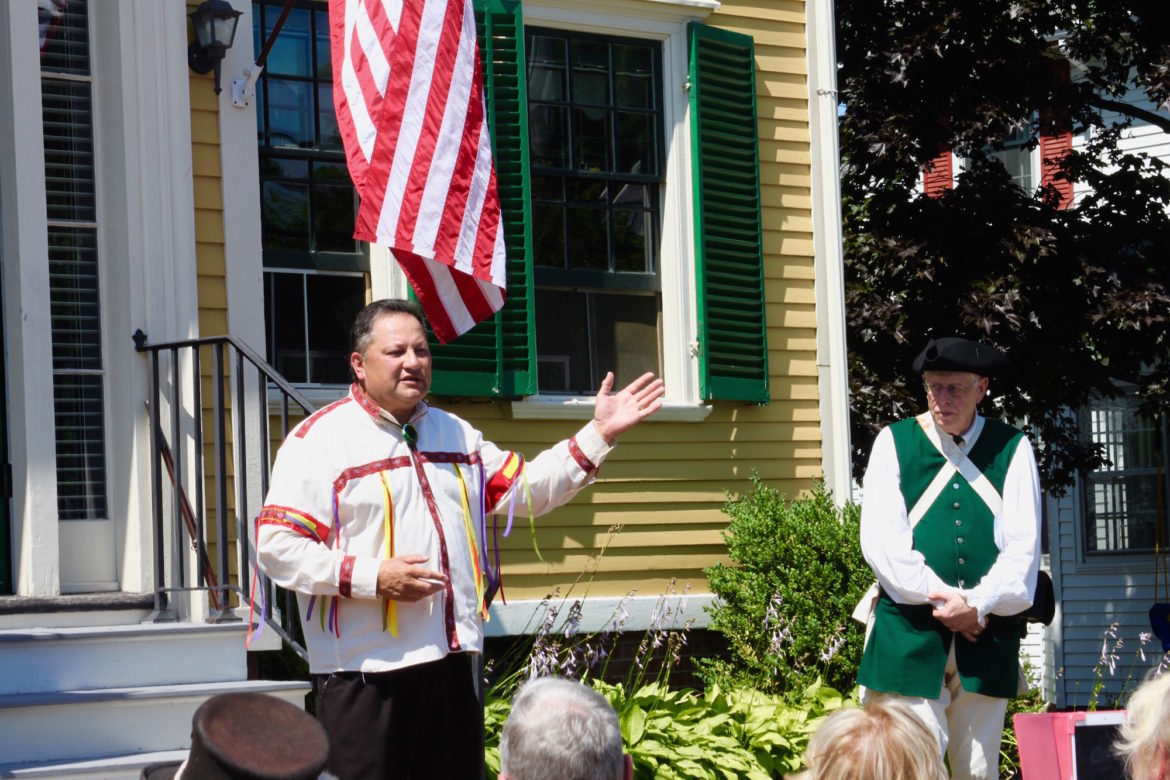
Charlie Breitrose
Henry Bear, a direct descendent of one of the signers of the Treaty of Watertown, said the impact treaty can still be felt today in the Maliseet tribe.
He recalled that the Declaration of Independence was read in Watertown during the days that representatives of the U.S. and the Indian tribes were negotiating the Treaty of Watertown.
“I can imagine them jumping to their feet and said, ‘Let’s Go! Where do we sign up?'” Bear said.
When Bear was elected to the Maine House, his first piece of business was the Treaty of Watertown.
“I said I won’t do anything until you agree that this treaty is still valid,” Bear said. “They passed it unanimously. Implications of this Watertown Treaty are still valid.”
The treaty helps the tribes in the U.S. run some of their programs, Bear said.
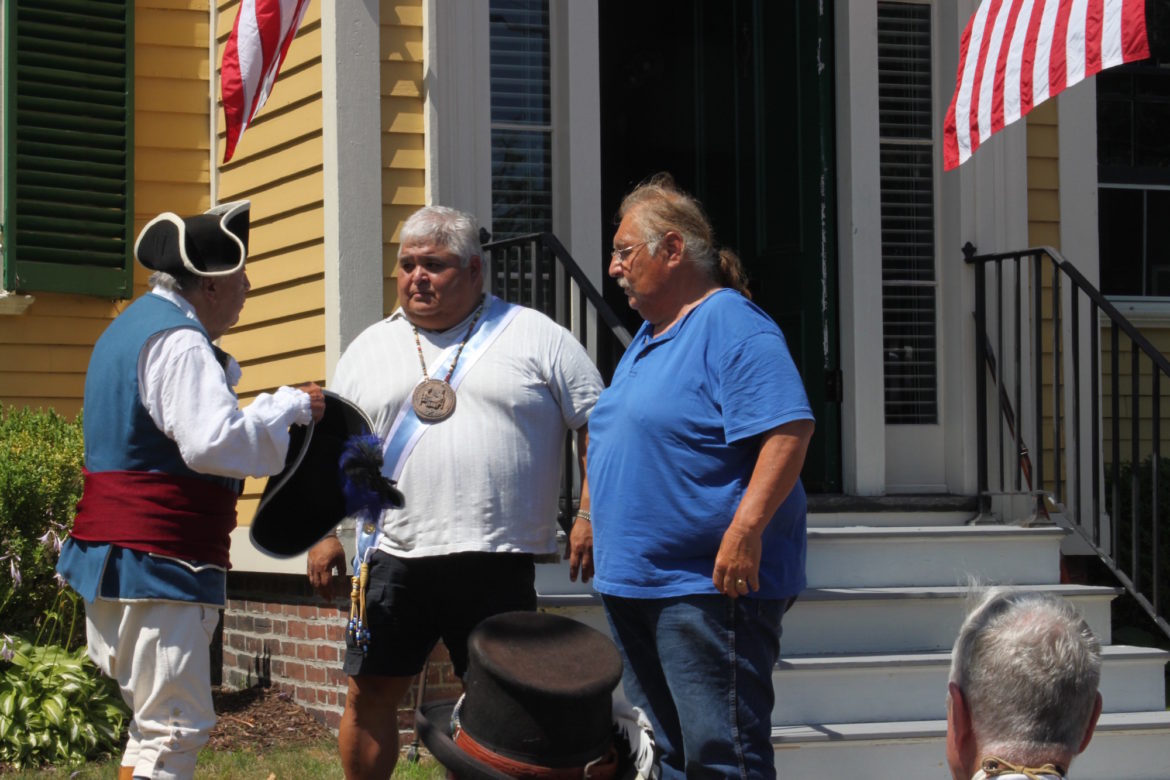
Charlie Breitrose
Jack Piantedosi (left) presents Ron Knockwood (center) and Keptin Russell Julian with a colonel’s tricorner hat on behalf of the Sipken’kati District Mi’qmak Grand Council at the celebration of the signing of the Treaty of Watertown.
At the time of signing of the treaty, Maine was part of Massachusetts and was known as the Eastern Lands, said Wallace Dailey, the accessions archivist at the Massachusetts Archive and a resident of Watertown.
While not a direct blood descendant of a treaty signer, Watertown’s Marilyn Petitto Devaney is a member of the board that signed the treaty on behalf of Massachusetts. She is a member of the Governor’s Council, and is the first from Watertown.
Today, she does not sign treaties, but does sign off on nominees for judgeships and boards such as the Parole Board, Appellate Tax Board and the Industrial Accident Board.
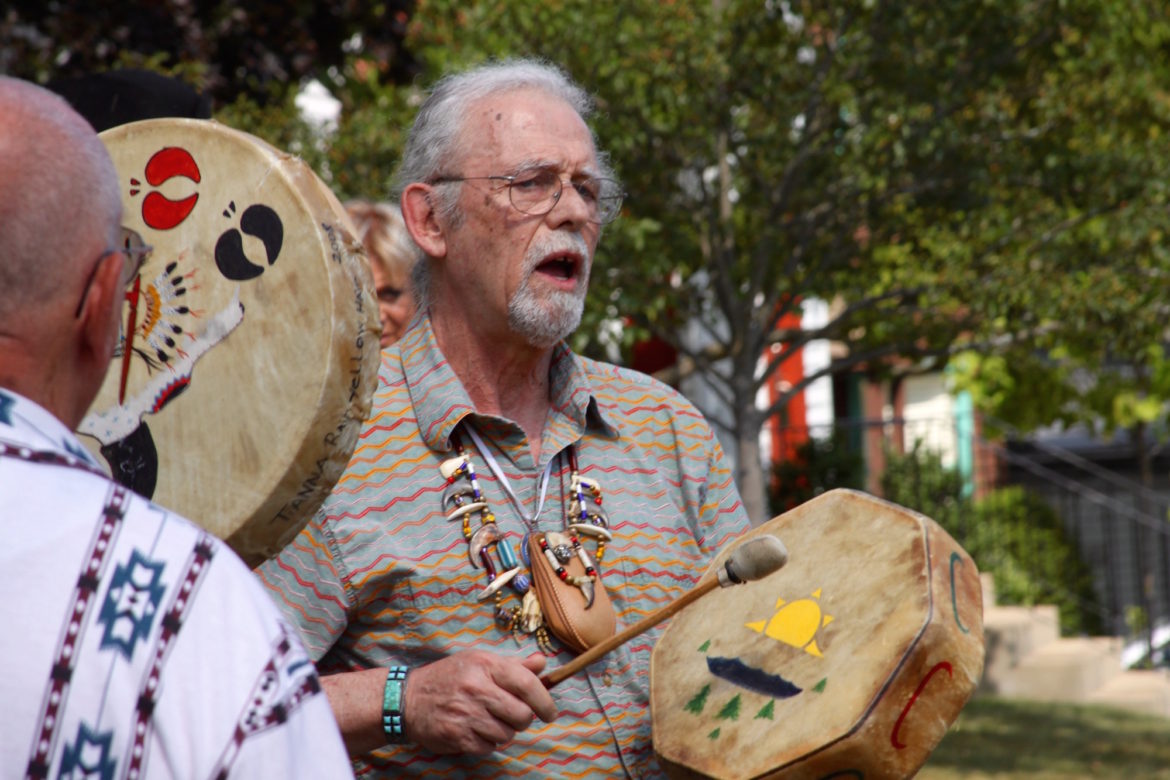
Charlie Breitrose
Noel Rainville of the United Native American Cultural Center plays a traditional drum during the Treaty Day and Declaration of Independence celebration hosted by the Historical Society of Watertown.
The ceremony also celebrated Watertown’s and Massachusetts’ history. The event started more than 20 years ago after it was discovered what role the house had played in the two historic events.
For his role in researching the Treaty of Watertown and putting together the earliest celebrations, Jack Piantedosi received a plaque from the Historical Society of Watertown.
The Edmund Fowle House almost didn’t survive to host such occasions. A Bill in the Legislature to pay for rehabbing the house was nearly vetoed by then Governor Mitt Romney. Petitto Devaney heard about the veto and went to talk to him.
“Mitt Romney gave us the money, I’ve got to give him credit,” Petitto Devaney said. “I went in and said it is not for Watertown, it is for the history of Massachusetts.”
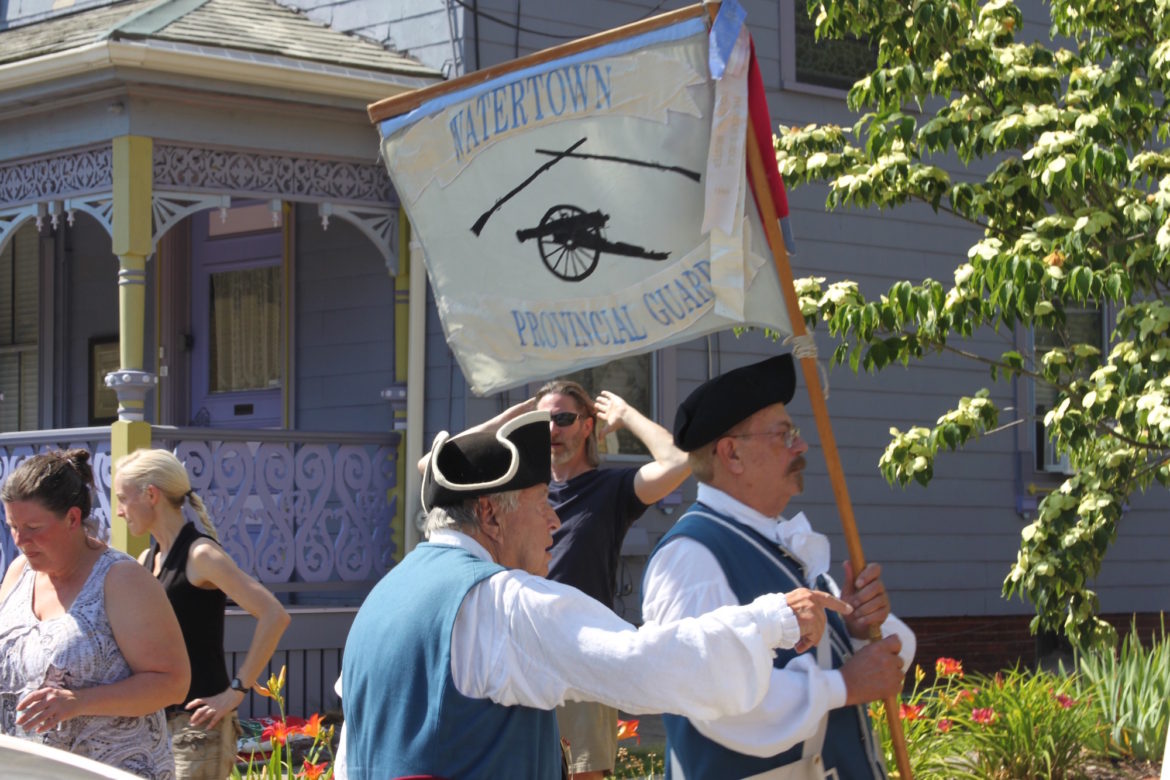
Charlie Breitrose
Members of the Watertown Provincial Guard, a historic reenactment group, stand guard outside the Edmund Fowle House during the celebration of the Treaty of Watertown and first reading in the state of the Declaration of Independence.
Sorry I missed the ceremony. It’s something that Watertown is home to the nation’s first treaty–I didn’t know that–as well as the Council Chamber on the second floor of the Edmund Fowle House, where the colonialists met to form our country. Doesn’t get any more historic (or historical) than that.
What a remarkable event! I’m so sorry to have missed it. Bravo to the tireless organizers of Treat Day and to the supporters of the Watertown Historical Society and the Edmund Fowle House!